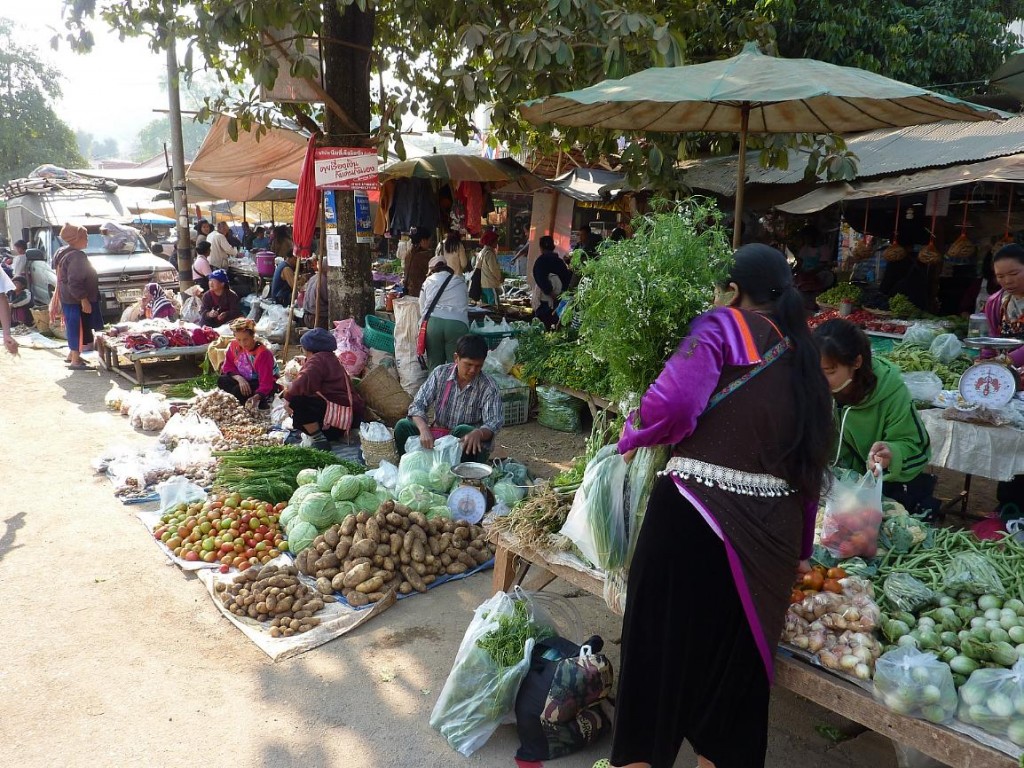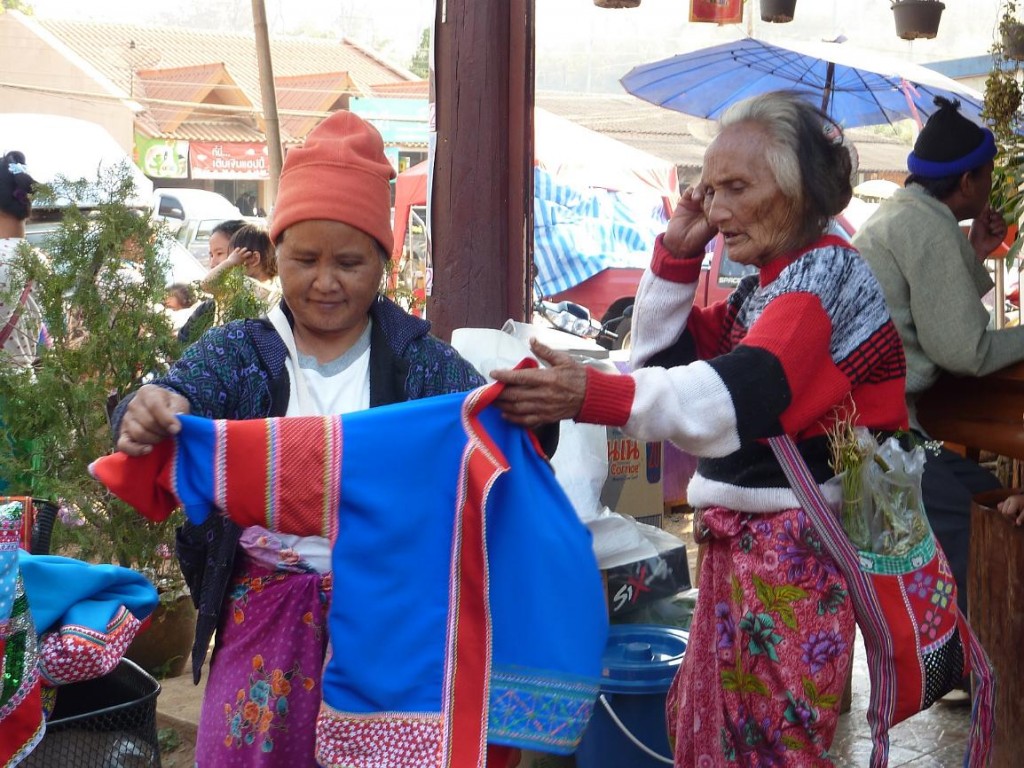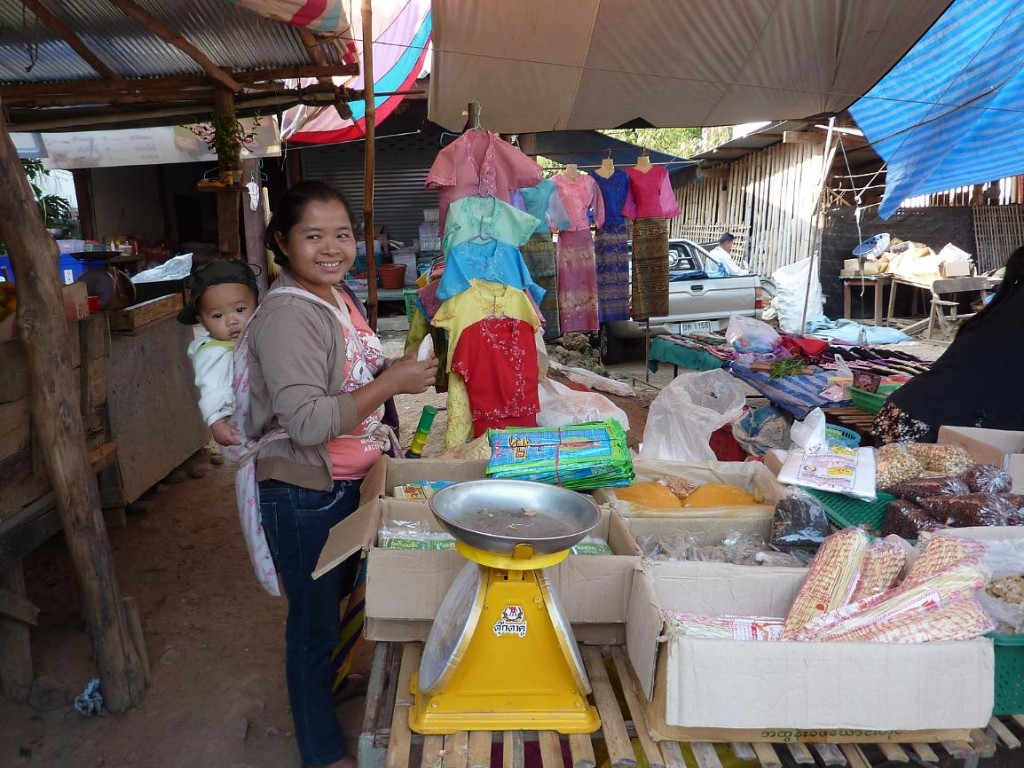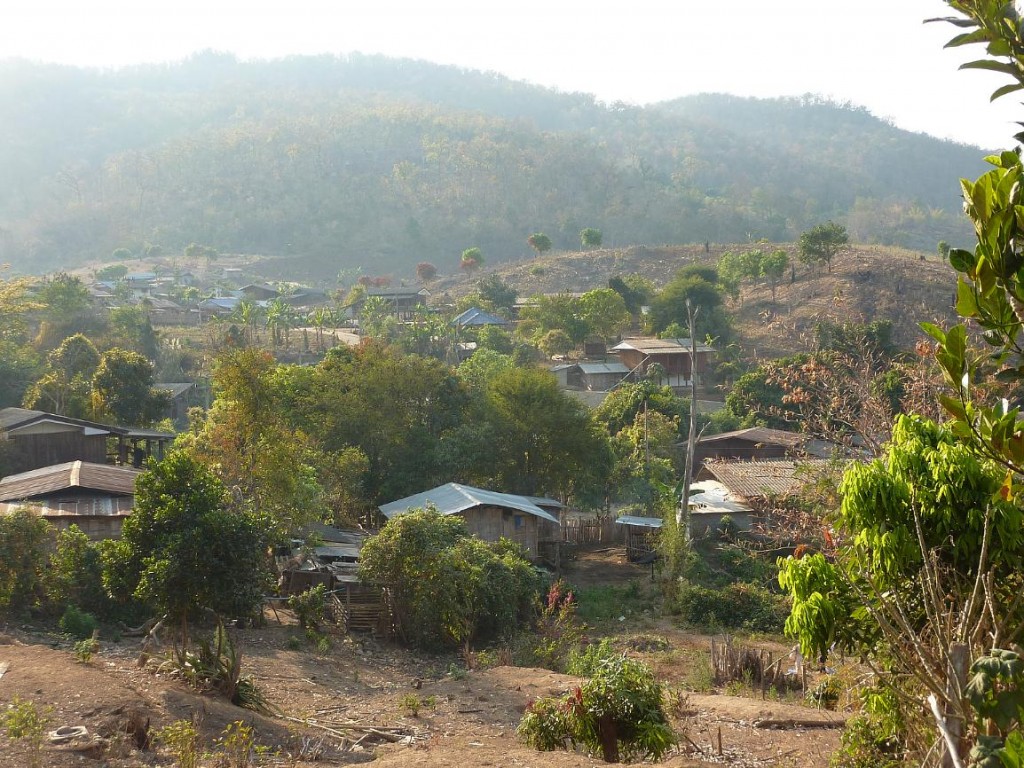My first of two mornings in the village turns out to be the one day each week that most of the local people come down from the surrounding hill villages. They come both to sell what they produce and to do their weekly shopping. The hill villages to the south are linked by a single looping road, unpaved according to the maps, but actually mostly paved throughout. There are similar routes to the north. That they are paved is fortunate as travel here is difficult enough on these steep hills. Most people have motorbikes, and many have pickup trucks. Those who have pickups are often willing to offer a ride in the back to those waiting for a local songthaew on the main road, or walking.
The villages are mostly Lisu to the south, and to the north are Shan, Red and Black Lahu, and Karen villages. On this one day each week, everyone comes down into town. One thing that makes this region interesting is that western clothing is not common. So on this one brief morning there is every kind of textile common throughout the area, and every local culture, and all the local produce currently ready for picking.
Along with the local tribes people are vendors who do a circuit of the weekly markets. Some sell clothing, others sundries, and others come with vans packed with boxes of staples like cooking oil. Oil is a high demand item in Thailand, crucial to the cooking – home and street vendor and small restaurant alike.
The flurry of activity in the cool of the morning winds down much faster than one expects. By eleven am, people have sold what they have brought down from the hills, have loaded their trucks with supplies, and the family and neighbors have climbed into the backs of the pickups for the ride home. Suddenly one realizes that it is over. The vendors are taking down their canopies and tables and are leaving too.
Behind the temporary stalls of the morning is a smaller permanent market which will be open much of the day, but activity is very light. It is time to explore more. The evening before I had walked west on the main road to the local forest wat. This afternoon I begin a walk up to the first Lisu village to the south, Ban Nong Tong. The way is steep and ten minutes up the hill, a truck pulls over. Do I want a ride? Well, sure. I get out at the first village, not wanting to go farther than I’d be able to walk back.
I walk on through the village thinking I will see more here on my way back through. Continuing past the houses, the road steepens dramatically. Pickups drive by with the backs full of kids. About fifteen minutes up the hill, a man on a motorbike stops. He urges me to get on behind him. The uphill continues on and on. Eventually we reach the next village, Ban Nong Pha Jum, and I climb off, thanking him.
It is all new, all interesting. I walk a circuit of the Lisu village, trying to not invade the privacy of the place. Just walking. Looking, but not staring, and not taking photos. Soaking it in. These are peoples private spaces and I don’t want to intrude.
A narrow paved road loops through most of the village of perhaps 40 homes. The pavement portion must be much appreciated in the rainy season. A few structures are one story cement block, but most are elevated. A couple appear strongly built with modern materials, but the rest are more basic and often appear patched together with whatever bits of wood would fit. Walls might be rough wood plank or woven bamboo. Roofs vary. Most are metal, but others are constructed from palm fronds or from leaves.
As is typical in such places, chickens and pigs wander freely about. There are a few small kitchen gardens, but not many other plants apart from some poinsettias and the local trees. Small hill villages like this will be located where there is a source of water. In Ban Nong Pha Jum, the indications are that this water supply is slight as suggested by the small size of the village and by the lack of gardens.
Walking back down is easier. I have planned to explore the first village as I pass back through, but again, high up on the hill, a pickup truck stops and the driver urges me to accept the favor. And so I do. I think they see my reticence as concern or fear. Really it is just that I like the walk, but I cannot express this in Thai, or in Lisu and it is rude not to accept these kind gestures when you have no way to explain.
And of course we continue right on through the first village and on down to the main road. Again, I cannot explain that I am in no hurry to get anywhere, that I only want to wander. The actions of a farang make little sense to the Lisu, I am sure.
People are so kind here. If you have a motorbike or truck, you are blessed, and you share it without hesitation.
I have noticed the strangest thing at the edges of the villages. There are paper enclosures with clothing and toys. I study them, try to understand their meaning. I believe that they are memorials to someone who has passed, all this clothing no longer needed, toys which must have belonged to someone who is no longer here to use them, food offerings, household items. It is several days later that I learn what they really are.
The hilltribe people here practice animism and believe in all sorts of spirits. In Burma these spirits are called nats and the belief there is very strong. In Burma, people are most often a sort of dual Buddhist-animist. We are practically in Burma here, so close to the border, and the tribes are often related. Some are on the safe side of the border, others on the persecuted side. These enclosures with their gifts are offerings to the bad forest spirits, to keep them outside of the villages, in their sheltering trees. Not graves, or memorials, afterall.








